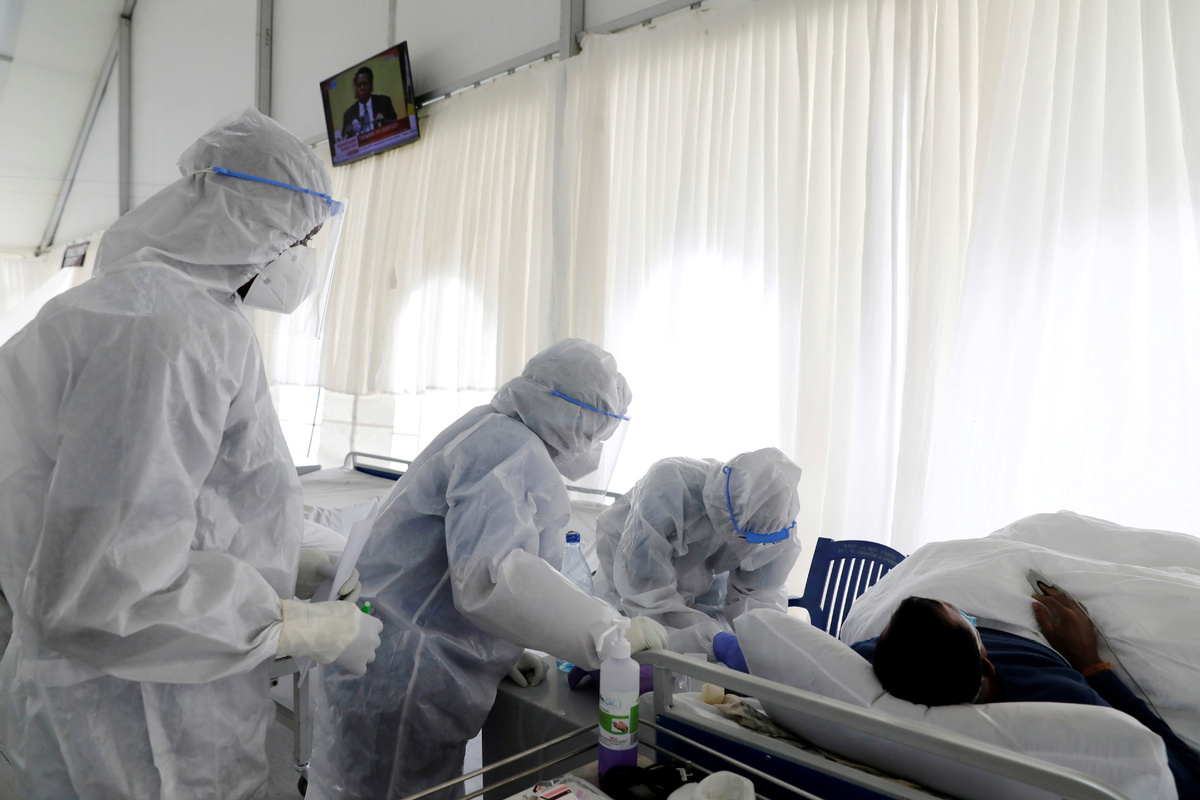Kenya eases burial rules amid crisis
By Edith Mutethya in Nairobi, Kenya | chinadaily.com.cn | Updated: 2020-09-08 21:53

Medical staff treat a COVID-19 patient inside a field hospital built on a soccer stadium in Machakos, as the number of confirmed coronavirus disease (COVID-19) cases continues to rise in Kenya, July 23, 2020. [Photo/Agencies]
The Kenyan Ministry of Health has revised the strict procedures on management of bodies of coronavirus fatalities to address stigma concerns for affected families.
Doctor Francis Kuria, the director of health, on Tuesday said the ministry had scaled down the protocols after new findings indicated dead bodies don't transmit the virus.
"We have finalized the revised protocols that are going to guide us while conducting burials moving forward," Kuria said.
The new guidelines will minimize the involvement of the ministry in burial ceremonies, allowing family members to give their loved ones a decent send off.
The guidelines will focus on ensuring mourners don't come into contact with the deceased's bodily fluids, in addition to following other health safety measures, like observing social distance.
The previous guidelines issued immediately after the pandemic were reported in the country, required overseeing the disposal of human remains from coronavirus cases by a public health official within two days to avoid community practices that would result in more infections through contact.
The body bag was wiped with a 0.5 percent sodium hypochlorite or disinfectant and the casket was handled using personal protective equipment at all times. The casket containing the body was not opened for viewing.
Large gatherings during burials were banned, limiting the number of mourners to a maximum of 15 people.
The public has been irked by the burial procedures, saying they left affected families stigmatized and that body management by the ministry was contrary to guidelines issued by the World Health Organization.
According to the UN agency, except in cases of cholera and hemorrhagic fevers, such as Ebola and Marburg, dead bodies are generally not infectious.
The WHO said only the lungs of patients with pandemic influenza, if handled improperly during an autopsy, can be infectious. Otherwise, cadavers do not transmit disease.
In its guideline on the management of a dead body in the context of coronavirus published on March 24, the WHO directed that the dignity of the dead, their cultural and religious traditions, and their families should be respected and protected throughout.
The agency said hasty disposal of someone who died from coronavirus should be avoided and that authorities should manage each situation on a case-by-case basis, balancing the rights of the family, the need to investigate the cause of death and the risks of exposure to infection.
"I remember in tears, the burial procedure of my uncle who succumbed to coronavirus. Despite being a rich man, he was buried like a poor person. We had plans to hold a celebration of his life, slaughter two bulls, cook different meals and enjoy a variety of drinks," said George, who wanted to be identified by one name.
"The ceremony took less than an hour and the gate was locked immediately; the team from the ministry obligated with the role of handling the body got inside. Many of my relatives were locked outside. The body was buried immediately and all the people were directed to leave the compound. My uncle's family members were forced to get in their cars to drive back to Nairobi."
George, who said culturally his tribe holds elaborate burial ceremonies, added he was glad to hear the ministry's announcement. Still, the stigmatizing experience of his uncle's burial will remain etched in his mind.
























